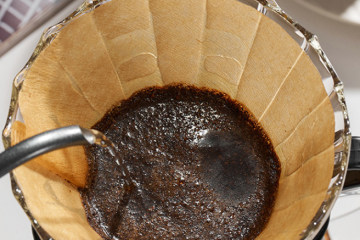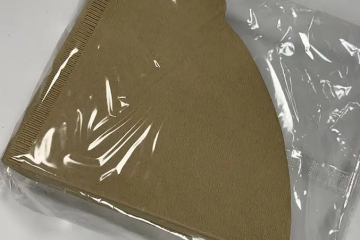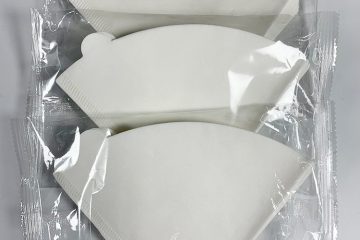Micrometers of Coffee Filter Paper: An In-Depth Technical Analysis
Coffee filter paper shapes the taste and aroma of coffee. Micrometer-sized pores, measured in μm (1 micron = 1 millionth of a meter), determine its filtering efficiency and coffee quality by controlling the size of particles removed.

Pore Size Range in Coffee Filter Paper
Coffee filter paper typically features pore sizes ranging from 20 to 30 microns. This range ensures that larger particles in the coffee powder are filtered out, resulting in a clear and transparent coffee liquid that retains the essential aroma and oils of the coffee.
Specifically, the filter paper is constructed with fibers approximately 20 microns wide, creating gaps that allow particles smaller than 10 to 15 microns to pass through. This delicate balance aims to optimize both the filtering effect and the coffee’s taste. Excessively small pores can lead to clogging, impacting the flow rate and potentially altering the coffee’s flavor. Conversely, overly large pores may fail to adequately filter out impurities, compromising the clarity and overall taste of the coffee.
Correlation Between Coffee Particle Size and Filter Paper Pore Size
Coffee bean grind size is crucial for selecting filter paper and achieving the perfect brew. Ideally, aim for a grind size between 500 and 600 microns, adjusting based on taste.
Too fine a grind may lead to bitterness and a dry sensation due to over-extraction. Too coarse, however, can result in a weak, watery taste from under-extraction. Mixed particle sizes in ground coffee can cause uneven extraction, with some beans over-processed and others under-extracted.
Choosing the right grind size and filter paper pore size is crucial for achieving consistent particle size, which in turn ensures uniform extraction and enhances the coffee’s overall quality.
the micron-level pore size of coffee filter paper subtly but significantly affects coffee taste. Choosing the right pore size ensures clarity, aroma, and oil retention, with uniform extraction.
Micron Size’s Impact on Coffee Taste
Clarity & Taste: Smaller pores filter larger particles and impurities, enhancing clarity and purity, reducing off-flavors.
Aroma & Oil Retention: Pore size affects aroma and oil retention. Smaller pores may filter some oils, yielding a brighter taste; larger pores retain more oils, resulting in a richer flavor.
Extraction Uniformity: Pore size influences extraction uniformity. Smaller pores ensure more uniform extraction, balancing flavor.
Material & Bleaching Treatment’s Role
Filter paper material, bleaching treatment affect coffee taste. Different materials vary in fiber structure and water absorption, impacting extraction and flavor. Bleaching changes chemical properties, influencing taste.
Filter Paper Material and Bleaching Process
Beyond pore size, the material composition and bleaching treatment of the filter paper also influence the coffee’s taste and aroma. Unbleached filter paper often has a natural pulp flavor that can subtly enhance the coffee’s profile. Bleached filter paper, while whiter in appearance, may retain traces of chemical bleaching agents that could affect the taste.
In summary, the micrometer pores in coffee filter paper play a crucial role in the coffee’s quality and flavor. Choosing the right pore and grind sizes guarantees clarity, aroma, and oil retention, enhancing the brewing enjoyment. Additionally, the filter paper’s material and bleaching process are vital for tailoring the coffee to your taste.



0 Comments